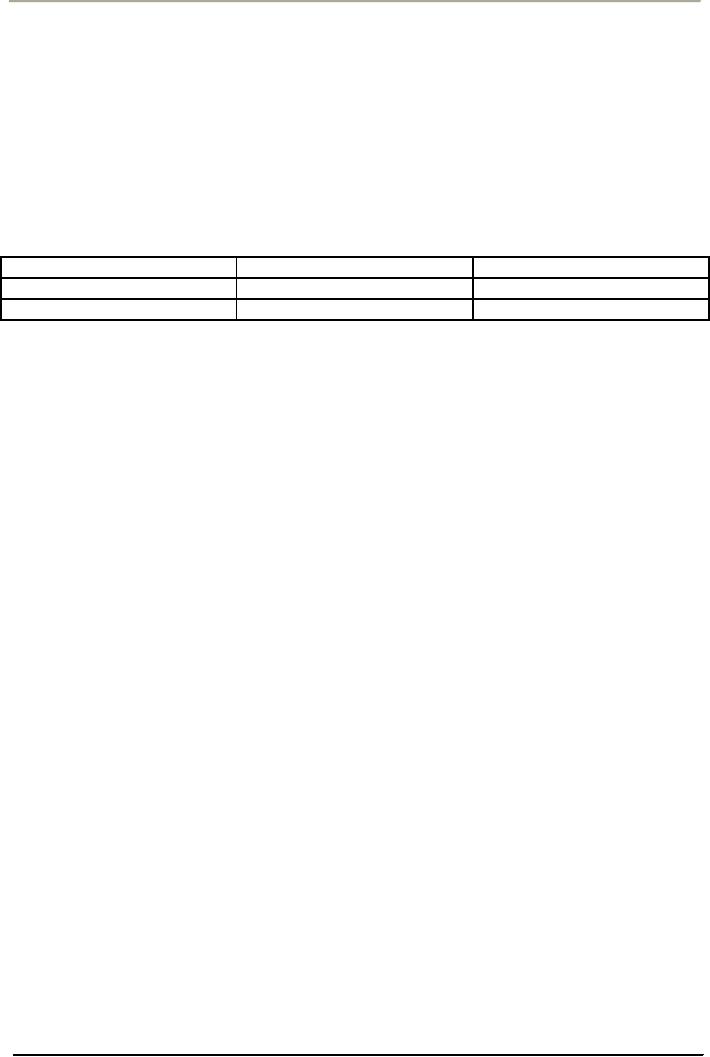 |

Total
Quality Management
MGT510
VU
Lesson
# 24
ISO
9001(2000) QMS (CLAUSE # 6)
RESOURCES MANAGEMENT
6.
Resource
Management
ISO
9001:2000 Quality Management
Systems -Requirements
6.
Resource
Management
6.1
Provision
of Resources
The
organization shall determine and
provide the resources
needed
a)
To
implement and maintain the quality
management system and continually
improve its
effectiveness,
and
b)
To
enhance customer satisfaction by
meeting customer
requirement.
6.1
General
Guidance
6.1.1
Introduction
Resources
essential to the implementation and achievement of the
organization's strategies and
objectives
for the quality management
system should be identified and
made available. These
may
include
people, suppliers, information,
infrastructure, work environment and
financial resources.
Issues
to be Considered
Consideration
should be given to
·
efficient
and timely provision of resources in
relation to opportunities and
constraints,
·
tangible
resources such as realization
and support facilities,
·
intangible
resources such as intellectual
property,
·
resources
and mechanisms to encourage innovative
continual improvement,
·
organization
structures, including project and
matrix management
needs,
·
information
management,
·
enhancement
of competence via training,
education, and
learning,
·
use
of natural resources and the impact of
resources on the environment,
and
·
planning
for future resources.
ISO
9001:2000 - Quality Management
Systems - Requirements
6.2
Human
Resources
6.2.1
General
Personnel
performing work affecting
product quality shall be competent on the
basis of appropriate
education
training, skills and experience.
6.2
Human
Resources
Involvement
of People
In
order to achieve its objectives and to
stimulate innovation, an organization
should encourage the
involvement
of its people through
·
identifying
competence needs for each
process activity,
·
selection,
ongoing training, and career
planning,
·
defining
responsibilities and authorities,
·
establishing
individual and team objectives,
managing performance and evaluating
results,
facilitating
involvement in objective setting and
decision making,
·
encouraging
recognition and
reward,
95

Total
Quality Management
MGT510
VU
·
facilitating
open, two-way communication by
continually reviewing the needs of
its people,
creating
conditions to encourage
innovation,
·
ensuring
effective teamwork,
·
using
information technology to facilitate
communication of suggestions and
opinions,
·
using
measurements of people satisfaction
for improvement, and
·
invest
·
targeting
the reasons why people are
leaving the organization.
Subcontracting
or temporary employment of people
should be considered to ensure that the
objectives
of
the organization are achieved.
ISO
9001:2000 - Quality Management
Systems - Requirements
6.2.2
Competence, Awareness and
Training
The
organization shall:
a)
Determine
the necessary competence for personnel
performing work affecting
product quality,
b)
Provide
training or take other actions to
satisfy these needs,
c)
Evaluate
the effectiveness of the actions taken,
d)
Ensure
that its personnel are aware
of the relevance and importance of their
activities and how
they
contribute to the achievement of the quality
objectives, and
e)
Maintain
appropriate records of education,
training, skills and experience (see
4.2.4).
6.2.2
Competence, Awareness and
Training
6.2.2.1
Competence
The
organization should identify the
competence needed for each,
activity that affects its
performance,
should
assess the competence of its
people to perform the activities, and
develop plans to close
any
gaps.
The identification should be
based on an analysis of present and expected
needs of the
organization
compared with the existing
competence of its
people.
Input
for competence related needs
may come from a variety of
internal and external sources,
such as
·
future
demands related to strategic and
operational plans and objectives,
·
evaluation
of the competence of individual people to
perform defined activities,
and
·
Legislation,
Regulation, Standards, and directives
affecting the organization. its
activities and
its
resources.
6.2.2.2
Training and
Awareness
The
organization should analyze the
development needs of all its
people and design training plans
for
them.
This is to provide people
with knowledge which,
together with skills and experience,
leads to
competence.
The organization should
provide training to its
people in order to achieve its
objectives.
The
training should emphasize the
importance of meeting requirements and the
needs of customers and
other
interested parties. It should also
include the awareness of consequences to
the organization and its
people
of failing to meet tile
requirements.
Enhancement
of competence via training,
education and reaming
involves
·
technical
knowledge and skills,
·
management
skills and tools,
·
social
skills, .knowledge of markets
and customer needs and
expectations,
·
relevant
statutory and regulatory
requirements,
·
internal
and appropriate external standards,
and
·
documentation
for performing the
work.
96

Total
Quality Management
MGT510
VU
To
increase the awareness and
involvement of people, the training
should cover
·
the
vision for the future of the
organization,
·
the
organization's policies and
objectives,
·
organizational
change and development,
·
the
initiation and implementation of
improvement activities,
·
creativity
and innovation,
·
organization's
impact on society,
·
introductory
programs for new people,
and
·
periodic
refresher programs for people
already trained.
Training
plans should include .training
objectives,
·
training
programs and methodologies,
·
training
resources needed,
·
identification
of necessary support ,
·
evaluation
of training in terms of enhanced
competence of people,
·
measurement
of the effectiveness of training and the
impact on the organization.
Organizations
should consider providing personal
development training for
their people, in
organizational
development training
provided.
ISO
9001:2000 Quality Management
Systems - Requirements
6.3
Infrastructure
The
organization shall determine,
provide and maintain the infrastructure
needed to achieve conformity
to
product requirements. Infrastructure
includes, as applicable
a)
building workspace and associated
utilities;
b)
process equipment (both hardware and
software), and
c)
supporting services (such as transport or
communication).
6.3
Infrastructure
Infrastructure
provides the foundation for operations.
Depending on the organization's products,
the
infrastructure
may include plant, workspace, hardware,
software, tools and equipment, support
services,
communication,
transport and facilities.
The
organization should:
a)
define
and provide an infrastructure in terms
such as objectives, function,
performance,
availability,
cost, safety. security and
renewal;
b)
develop
and implement a maintenance approach, to ensure
that the infrastructure continues
to
meet
operational needs; this approach
should consider the type and
frequency of maintenance
and
verification of operation of each
infrastructure element, based on its
criticality and usage;
c)
evaluate
the infrastructure against the needs and expectations
of ail interested parties;
d)
consider
environmental issues associated
with infrastructure, such as
conservation, pollution,
waste
and recycling.
Natural
phenomena that cannot be controlled
may impact the infrastructure.
The plan for the
infrastructure
should consider associated risks and
include strategies to maintain the
quality of products.
ISO
9001:2000 - Quality Management
Systems - Requirements
6.4
Work
Environment
The
organization shall determine and
manage the work environment
needed to achieve conformity to
product
requirements.
97

Total
Quality Management
MGT510
VU
6.4
Work
Environment
The
work environment of an organization is a
combination of human and physical factors.
These factors
influence
motivation, satisfaction and performance of
people, potentially enhancing the performance
of
the
organization.
Examples
of human factors affecting the work
environment include
·
creative
work methodologies and opportunities
for greater involvement to realize the
potential
of
ail people,
·
safety
rules and guidance, including use of
protective equipment, .ergonomics,
·
special
facilities for people in the
organization.
Examples
of physical factors affecting the work
environment include
·
heat
·
hygiene
·
vibration
·
noise
·
humidity
·
pollution
·
light
·
cleanliness
·
air
flow
6.5
Information
Information
is a fundamental resource for the
continual development of an
organization's knowledge
base
and can stimulate innovation.
Information is also essential
for making factual
decisions.
To
manage information effectively, the
organization should:
·
identify
its information
needs,
·
identify
internal and external sources of
information.
·
provide
timely access to adequate
infon"l1ation,
·
use
infon"l1ation to meet its
strategies and objectives.
·
ensure
appropriate security and
confidentiality.
The
managing of information should be
evaluated for its effectiveness and
efficiency, and
improvements
should be implemented.
6.6
Suppliers
and Partnerships
Organizations
can benefit from
establishing relationships with suppliers
and partners to promote and
facilitate
clear and open communication and to improve the
processes that create
value.
There
are various opportunities
for organizations to increase
value through working with
their suppliers
and
partners such as
·
optimizing
the number of suppliers and partners.
·
establishing
two-way communication at the most
appropriate level in both
organizations to
facilitate
rapid solution of problems, and to avoid
costly delays or disputes.
·
cooperation
with suppliers in validation of the
capability of their processes,
.monitoring of
supplier
ability to deliver confon"l1ing
products,
·
encouraging
suppliers to implement continual
improvement programmes and to participate
in
joint
improvement initiatives,
·
involving
suppliers in the organization's design and/or
development activities to
share
knowledge
and improve the realization and
delivery of conforming products,
·
involving
partners in identification of purchasing
needs and joint strategy
development,
evaluating,
recognizing and rewarding
efforts achieved by suppliers and partners.
98

Total
Quality Management
MGT510
VU
6.7
Natural
resources
Consideration
should be given to the natural
resources that can influence
the performance of the
organization.
While such resources are
often out of the direct
control of the organization, they
can have
significant
positive or negative effects on its
results. The organization
should have plans, or contingency
plans,
to ensure the availability of these
resources and to prevent or
minimize negative effects.
6.8
Financial
Resources
Resource
management should include
activities for determining the
needs for, and sources of,
financial
resources.
The control of financial
resources should include
activities for comparing actual
usage
against
plans, and taking necessary action.
Management should plan, make
available and control the
financial
resources necessary to implement and
maintain the quality management
system and achieve
the
organization's objectives. Management
should also consider the development of
innovative financial
approaches
to support and encourage
improvement.
The
effectiveness and efficiency of the
quality management system
can influence the financial
results of
the
organization. For
example:
a)
Internally,
through process and product
failures, or waste in material and
time;
b)
Externally,
through product failures,
costs of compensation of guarantees and warranties,
costs
of
lost customers and
markets.
Reporting
of such matters may provide
a means of determining ineffective or
inefficient activities, and
initiating
improvement actions.
The
financial reporting of activities
related to the performance of the quality
management system and
product
quality should be used in
management reviews.
99
Table of Contents:
- OVERVIEW OF QUALITY MANAGEMENT:PROFESSIONAL MANAGERIAL ERA (1950)
- TOTAL QUALITY MANAGEMENT AND TOTAL ORGANIZATION EXCELLENCE:Measurement
- INTEGRATING PEOPLE AND PERFORMANCE THROUGH QUALITY MANAGEMENT
- FUNDAMENTALS OF TOTAL QUALITY AND RATERS VIEW:The Concept of Quality
- TOTAL QUALITY MANAGEMENT AND GLOBAL COMPETITIVE ADVANTAGE:Customer Focus
- TOTAL QUALITY MANAGEMENT AND PLANNING FOR QUALITY AT OFFICE
- LEADERS IN QUALITY REVOLUTION AND DEFINING FOR QUALITY:User-Based
- TAGUCHI LOSS FUNCTION AND QUALITY MANAGEMENT
- WTO, SHIFTING FOCUS OF CORPORATE CULTURE AND ORGANIZATIONAL MODEL OF MANAGEMENT
- HISTORY OF QUALITY MANAGEMENT PARADIGMS
- DEFINING QUALITY, QUALITY MANAGEMENT AND LINKS WITH PROFITABILITY
- LEARNING ABOUT QUALITY AND APPROACHES FROM QUALITY PHILOSOPHIES
- TOTAL QUALITY MANAGEMENT THEORIES EDWARD DEMING’S SYSTEM OF PROFOUND KNOWLEDGE
- DEMING’S PHILOSOPHY AND 14 POINTS FOR MANAGEMENT:The cost of quality
- DEMING CYCLE AND QUALITY TRILOGY:Juran’s Three Basic Steps to Progress
- JURAN AND CROSBY ON QUALITY AND QUALITY IS FREE:Quality Planning
- CROSBY’S CONCEPT OF COST OF QUALITY:Cost of Quality Attitude
- COSTS OF QUALITY AND RETURN ON QUALITY:Total Quality Costs
- OVERVIEW OF TOTAL QUALITY APPROACHES:The Future of Quality Management
- BUSINESS EXCELLENCE MODELS:Excellence in all functions
- DESIGNING ORGANIZATIONS FOR QUALITY:Customer focus, Leadership
- DEVELOPING ISO QMS FOR CERTIFICATION:Process approach
- ISO 9001(2000) QMS MANAGEMENT RESPONSIBILITY:Issues to be Considered
- ISO 9001(2000) QMS (CLAUSE # 6) RESOURCES MANAGEMENT:Training and Awareness
- ISO 9001(2000) (CLAUSE # 7) PRODUCT REALIZATION AND CUSTOMER RELATED PROCESSES
- ISO 9001(2000) QMS (CLAUSE # 7) CONTROL OF PRODUCTION AND SERVICES
- ISO 9001(2000) QMS (CLAUSE # 8) MEASUREMENT, ANALYSIS, AND IMPROVEMENT
- QUALITY IN SOFTWARE SECTOR AND MATURITY LEVELS:Structure of CMM
- INSTALLING AN ISO -9001 QM SYSTEM:Implementation, Audit and Registration
- CREATING BUSINESS EXCELLENCE:Elements of a Total Quality Culture
- CREATING QUALITY AT STRATEGIC, TACTICAL AND OPERATIONAL LEVEL
- BIG Q AND SMALL q LEADERSHIP FOR QUALITY:The roles of a Quality Leader
- STRATEGIC PLANNING FOR QUALITY AND ADVANCED QUALITY MANAGEMENT TOOLS
- HOSHIN KANRI AND STRATEGIC POLICY DEPLOYMENT:Senior Management
- QUALITY FUNCTION DEPLOYMENT (QFD) AND OTHER TOOLS FOR IMPLEMENTATION
- BASIC SQC IMPROVEMENT TOOLS:TOTAL QUALITY TOOLS DEFINED
- HOW QUALITY IS IMPLEMENTED? A DIALOGUE WITH A QUALITY MANAGER!
- CAUSE AND EFFECT DIAGRAM AND OTHER TOOLS OF QUALITY:Control Charts
- STATISTICAL PROCESS CONTROL (SPC) FOR CONTINUAL QUALITY IMPROVEMENT
- STATISTICAL PROCESS CONTROL….CONTD:Control Charts
- BUILDING QUALITY THROUGH SPC:Types of Data, Defining Process Capability
- AN INTERVIEW SESSION WITH OFFICERS OF A CMMI LEVEL 5 QUALITY IT PAKISTANI COMPANY
- TEAMWORK CULTURE FOR TQM:Steering Committees, Natural Work Teams
- UNDERSTANDING EMPOWERMENT FOR TQ AND CUSTOMER-SUPPLIER RELATIONSHIP
- CSR, INNOVATION, KNOWLEDGE MANAGEMENT AND INTRODUCING LEARNING ORGANIZATION